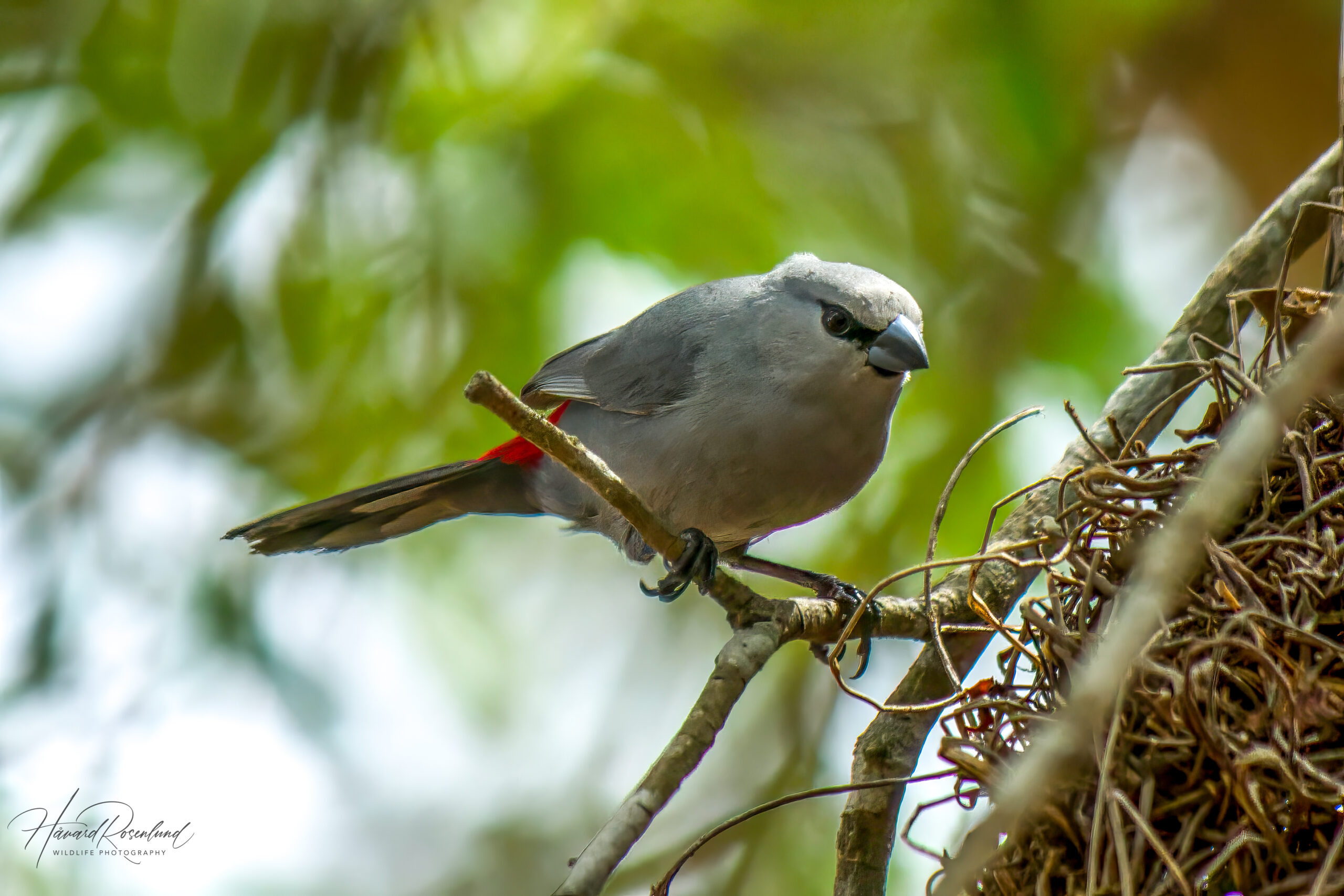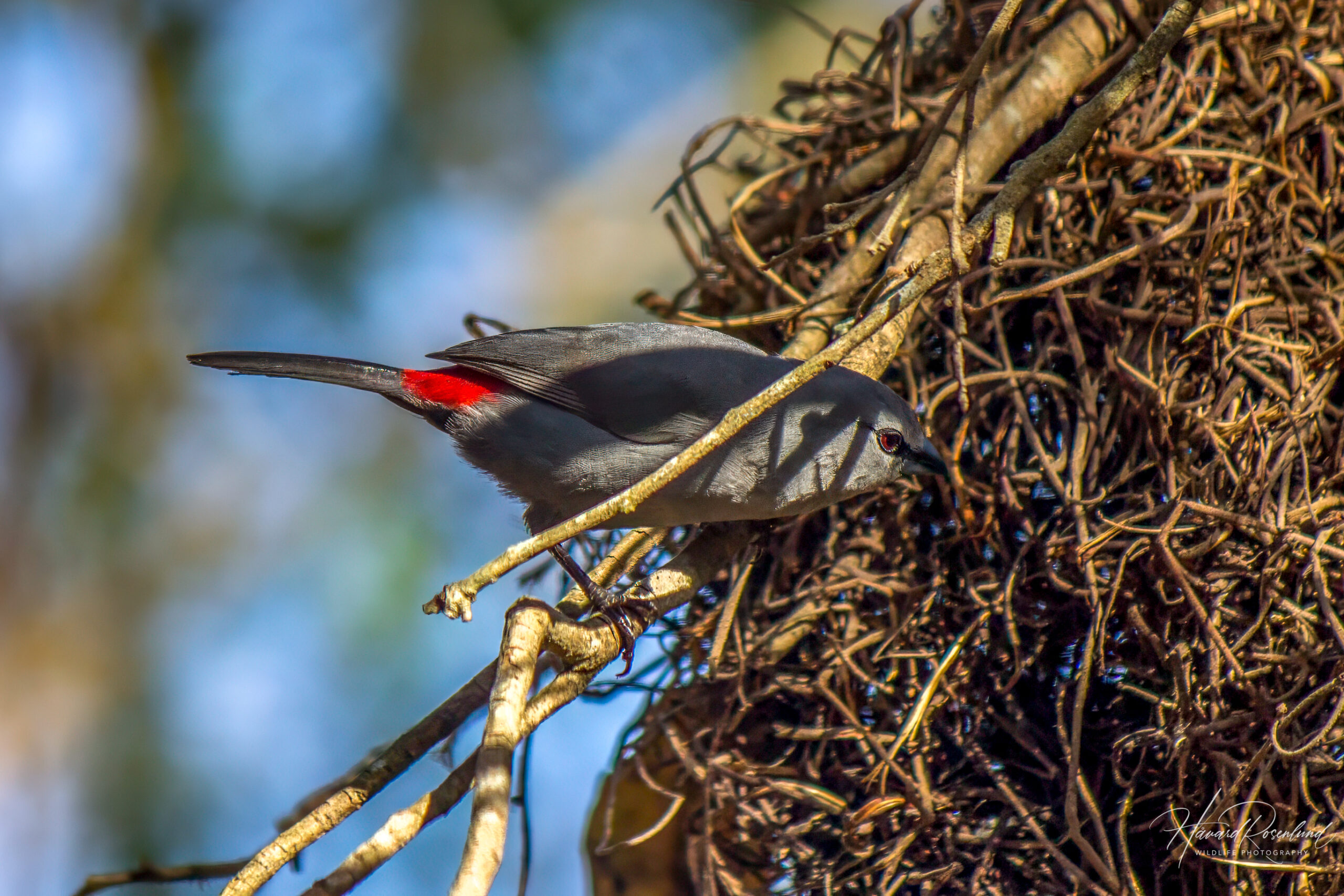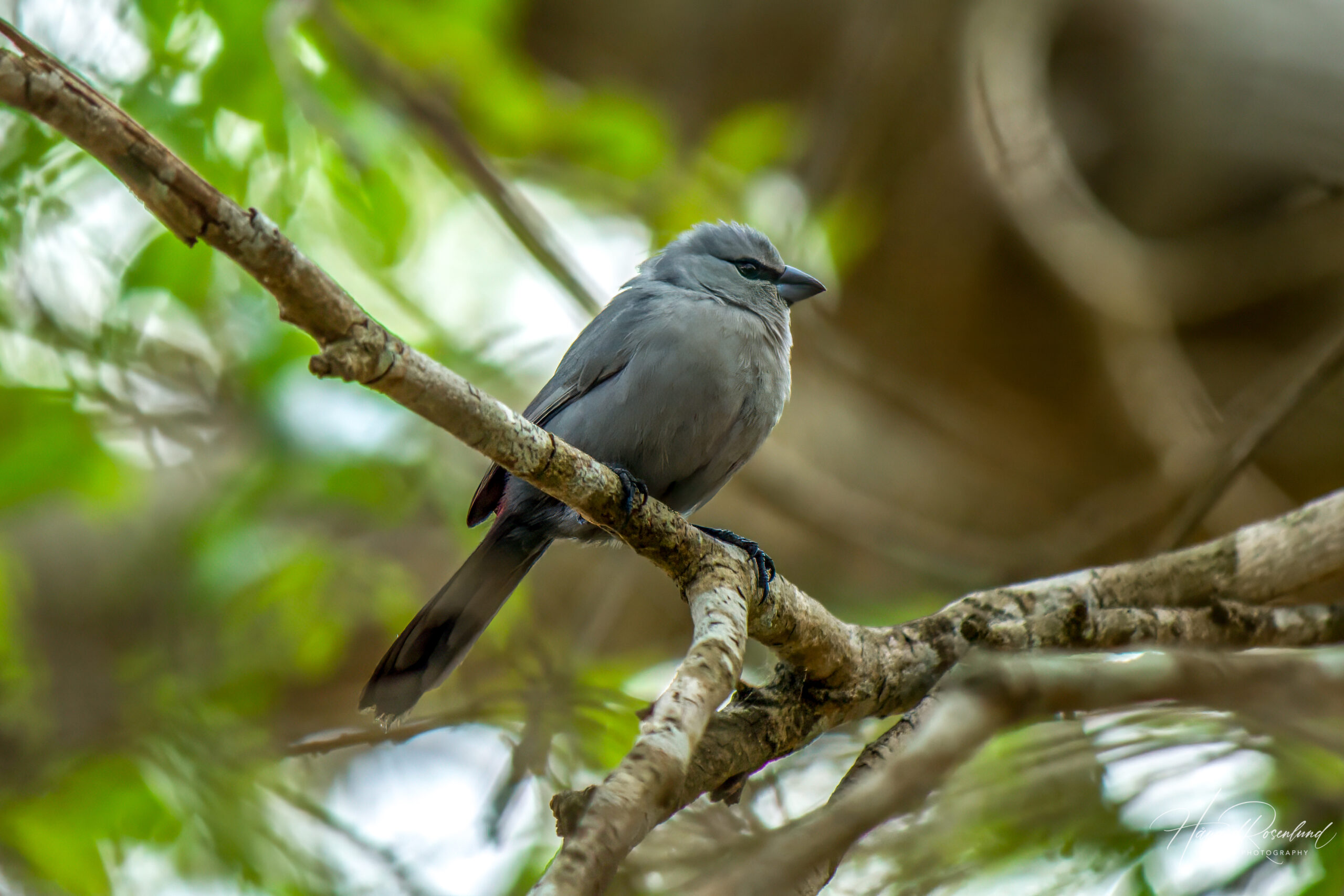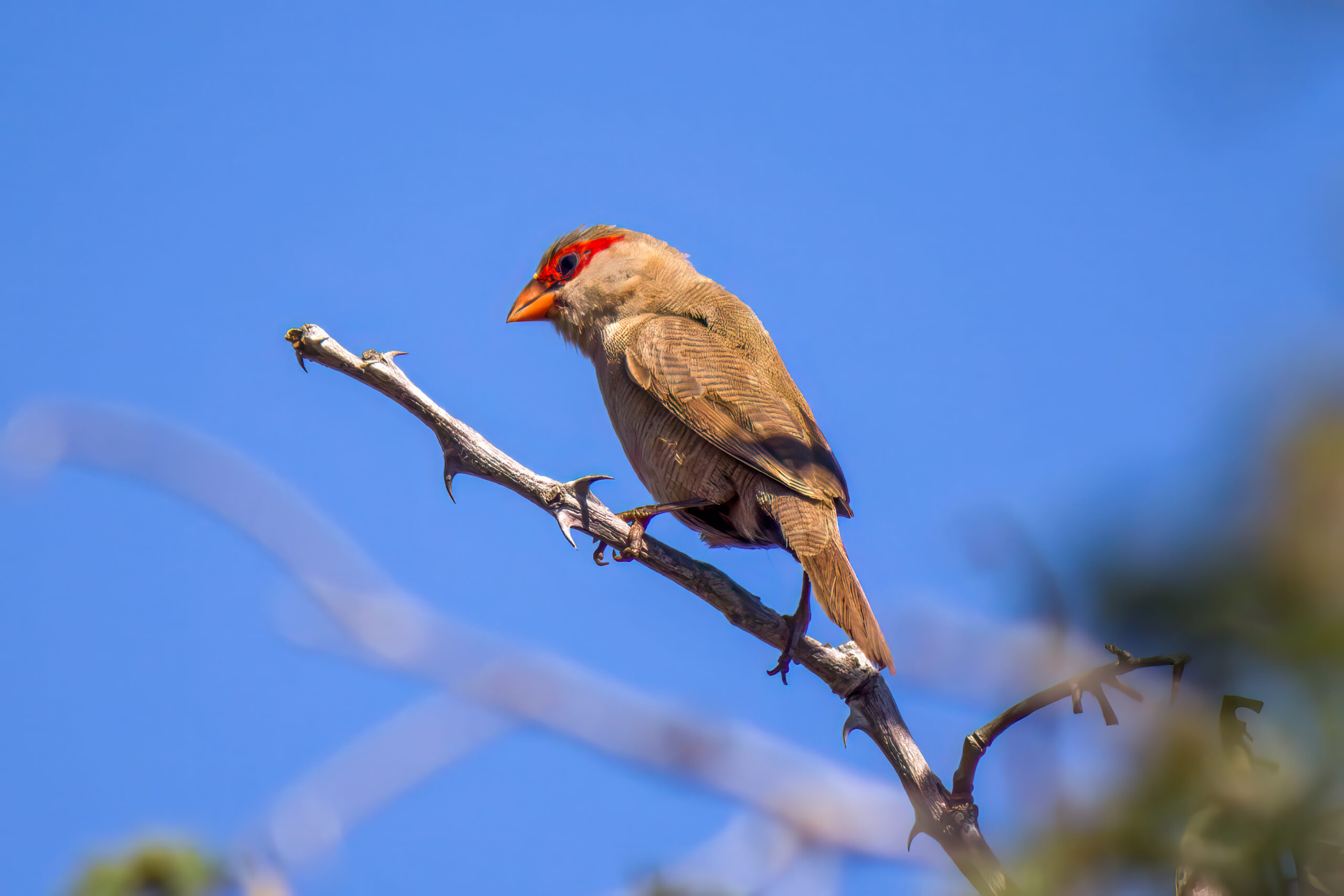Black-tailed Waxwing
(Glaucestrilda perreini)
Description
The black-tailed waxbill or grey waxbill (Glaucestrilda perreini) is a common estrildid finch found in southern Africa. Adults reach an average length of 10.5-11 cm (4-4.3 in). It is a mostly grey bird, with a black eye-stripe, a black tail and an obvious red rump. Both sexes are very similar. Juveniles are duller and lack the black eye-stripe. It is similar in appearance to the cinderella waxbill (Glaucestrilda thomensis), which is paler grey, has a pinkish bill, and is redder on the undersides and belly. The cinderella waxbill is only found in Angola and northern Namibia and the two species barely overlap.
Diet & habitat
The black-tailed waxbill prefers dense vegetation and undergrowth, and inhabits moist evergreen and lowland forests, coastal forests, sand forests and thickets. Seeds take up most of the diet but is does also feed on small invertebrates. Most of the foraging is done on the ground or in the vegetation where it plucks seeds off plants.
Nesting
Both parents build the nest, which is an oval-shaped ball made of grass with a side entrance. The insides are lined with fresh grass. It is placed either on a small tree or in a shrub. It may also use abandoned nests from other species, such as the dark-backed weaver (Ploceus bicolor), spectacled weaver (Ploceus ocularis) and village weaver (Ploceus cucullatus). 2-5 eggs are laid and incubated by both sexes for around 12 days. The chicks leave the nest after 19-21 days but will not be fully independent before a week or so later.
Status
The black-tailed waxbill is locally common within its preferred habitat and there are no threats to the species. It is listed as least concern on the IUCN Red List.







